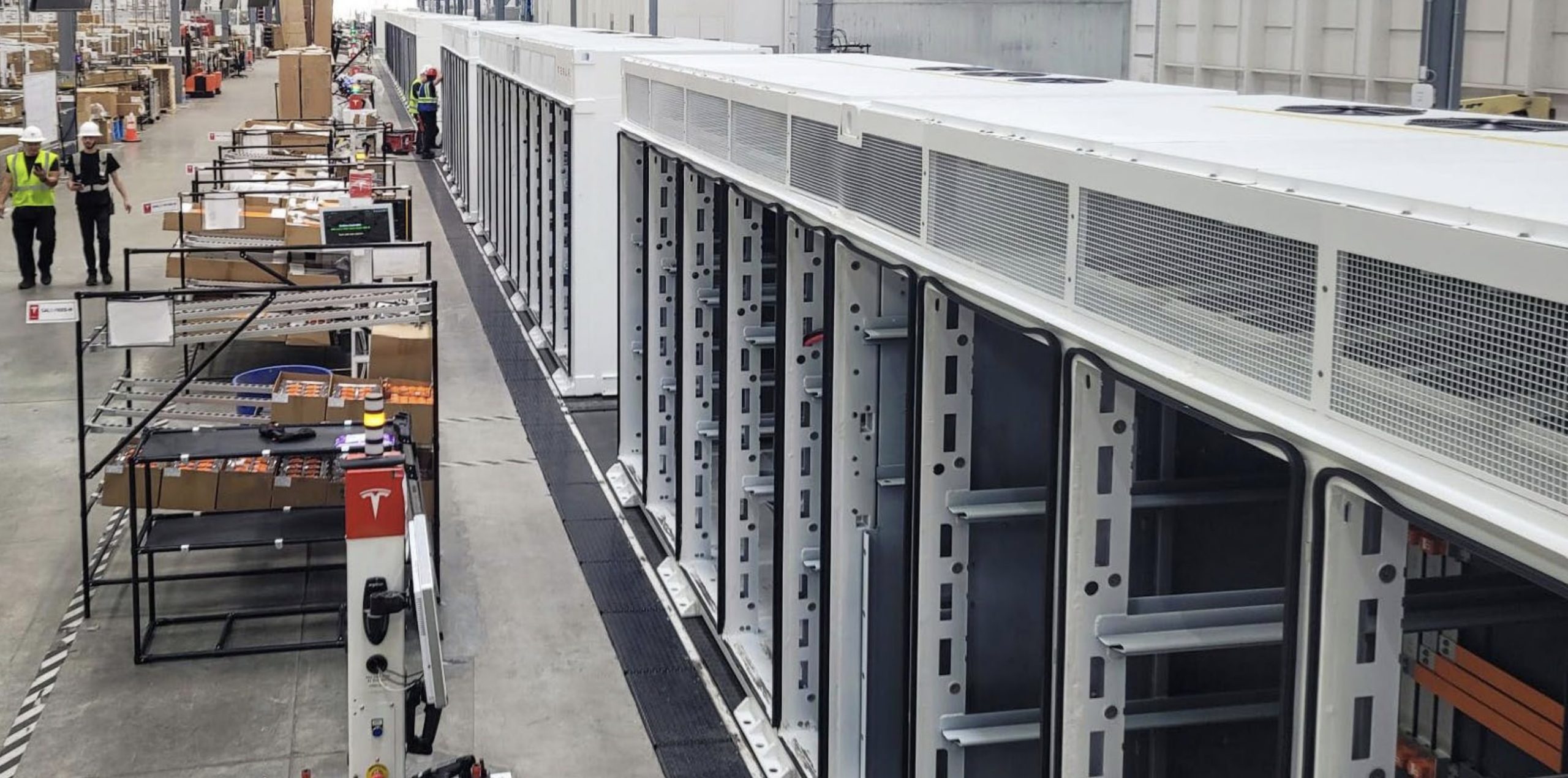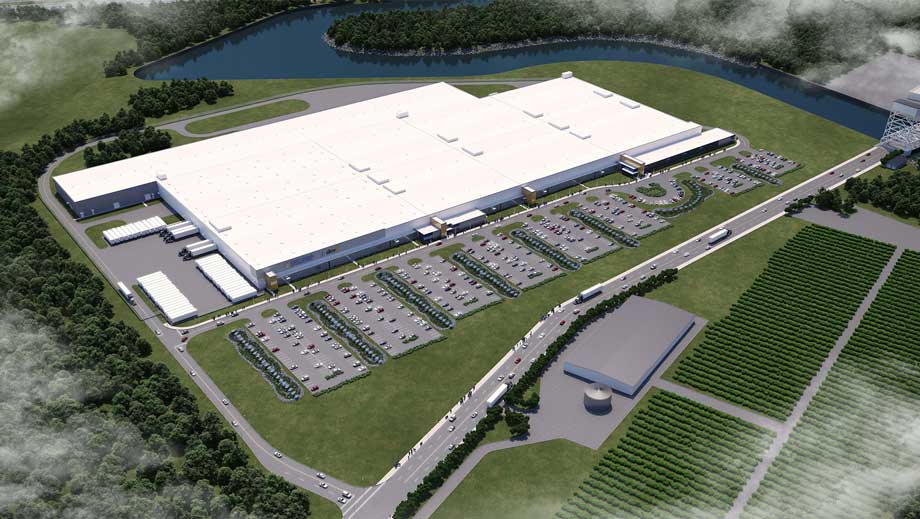![Tesla-SolarCity plant at Riverbend in South Buffalo. [Source: Derek Gee/Buffalo News]](https://www.teslarati.com/wp-content/uploads/2016/11/Tesla-SolarCity-factory-riverbend-buffalo-new-york-aerial.jpg)
![Tesla-SolarCity plant at Riverbend in South Buffalo. [Source: Derek Gee/Buffalo News]](https://www.teslarati.com/wp-content/uploads/2016/11/Tesla-SolarCity-factory-riverbend-buffalo-new-york-aerial-560x600.jpg)
Energy
Tesla solar plant dubbed “Gigafactory 2”, locations for Gigafactory 3, 4 and possibly 5 this year
Tesla used the fourth quarter earnings call and full year 2016 update to not only share financial performance but also shared insights into where the company is headed with existing businesses, including new plans that center around the Gigafactory model.
The cornerstone announcement that underpins all of Tesla’s strategy is that of the Gigafactory. This monolith is responsible for churning out battery cells for Tesla’s fleet of vehicles and battery storage products, and serves as the showcase for the company’s ability to “build the machine that builds the machines”.
Tesla Gigafactory 2
Tesla shed light on its manufacturing strategy, announcing for the first time the location of Gigafactory 2 as the recently acquired SolarCity plant in Buffalo, New York. The company announced in December an agreement made with Panasonic that would allow both companies to begin manufacturing photovoltaic cells, and modules for Tesla’s Solar Roof and traditional solar panels, at the facility. Tesla is set to launch the Solar Roof product in the second half of 2017.
Gigafactory 1 started out as a battery manufacturing facility but quickly grew to include Tesla Energy production and then Tesla Motors battery packs – with Elon finally stating that Tesla vehicles themselves would eventually roll out the doors of future Gigafactories.
The addition of newly minted Tesla Solar production to the Gigafactory model means Tesla will be producing all three of its core product families – Motors, Energy and Solar – in a single factory footprint. Vetting this concept out in Gigafactory 2 will provide a nice blueprint for future Gigafactories as Tesla looks beyond the borders of the U.S. towards international expansion.
Tesla Gigafactory 3, 4, 5
Tesla casually dropped news that the locations of Gigafactory 3, 4 and possibly 5 would be finalized later this year. The obvious location for #3 is Europe with strong Tesla vehicle sales in the region supported by an ever growing fleet of Superchargers in the area.
A quick glance at the world Supercharger map reinforces Tesla’s focus on Europe, with France, Spain, and more recently Lithuania attempting to curry favor with Tesla, as potential homes for a new Gigafactory.
Looking beyond to Gigafactory 4, Asia comes into focus as an obvious choice. Given China’s booming middle class and the country’s shift to becoming one of the largest EV markets in the world, a Tesla factory in China makes a lot of sense. It would allow the company to face-off against local EV manufactures by competing in their own backyard: streamlining logistics and skirting government red tape.
Tesla has big plans to scale. With sights set on an annual production target of 500k vehicles by 2018 and 1 million vehicles per year by 2020, not to mention its ambitious plans to transform the utility pickup and heavy hauler segment through electrification, and it becomes more clear that a need for a third, fourth and possibly fifth Gigafactory is needed.
Building on just the core need for batteries, a modular Gigafactory allows Tesla to move its production into a region in a single step, establishing local supply chains for raw materials while also cutting costs on shipping batteries, vehicles and solar products at the same time. Batteries and cars are not cheap to ship and this move makes sense on many levels.

Cybertruck
Tesla updates Cybertruck owners about key Powershare feature

Tesla is updating Cybertruck owners on its timeline of a massive feature that has yet to ship: Powershare with Powerwall.
Powershare is a bidirectional charging feature exclusive to Cybertruck, which allows the vehicle’s battery to act as a portable power source for homes, appliances, tools, other EVs, and more. It was announced in late 2023 as part of Tesla’s push into vehicle-to-everything energy sharing, and acting as a giant portable charger is the main advantage, as it can provide backup power during outages.
Cybertruck’s Powershare system supports both vehicle-to-load (V2L) and vehicle-to-home (V2H), making it flexible and well-rounded for a variety of applications.
However, even though the feature was promised with Cybertruck, it has yet to be shipped to vehicles. Tesla communicated with owners through email recently regarding Powershare with Powerwall, which essentially has the pickup act as an extended battery.
Powerwall discharge would be prioritized before tapping into the truck’s larger pack.
However, Tesla is still working on getting the feature out to owners, an email said:
“We’re writing to let you know that the Powershare with Powerwall feature is still in development and is now scheduled for release in mid-2026.
This new release date gives us additional time to design and test this feature, ensuring its ability to communicate and optimize energy sharing between your vehicle and many configurations and generations of Powerwall. We are also using this time to develop additional Powershare features that will help us continue to accelerate the world’s transition to sustainable energy.”
Owners have expressed some real disappointment in Tesla’s continuous delays in releasing the feature, as it was expected to be released by late 2024, but now has been pushed back several times to mid-2026, according to the email.
Foundation Series Cybertruck buyers paid extra, expecting the feature to be rolled out with their vehicle upon pickup.
Cybertruck’s Lead Engineer, Wes Morrill, even commented on the holdup:
As a Cybertruck owner who also has Powerwall, I empathize with the disappointed comments.
To their credit, the team has delivered powershare functionality to Cybertruck customers who otherwise have no backup with development of the powershare gateway. As well as those with solar…
— Wes (@wmorrill3) December 12, 2025
He said that “it turned out to be much harder than anticipated to make powershare work seamlessly with existing Powerwalls through existing wall connectors. Two grid-forming devices need to negotiate who will form and who will follow, depending on the state of charge of each, and they need to do this without a network and through multiple generations of hardware, and test and validate this process through rigorous certifications to ensure grid safety.”
It’s nice to see the transparency, but it is justified for some Cybertruck owners to feel like they’ve been bait-and-switched.
Energy
Tesla starts hiring efforts for Texas Megafactory
Tesla’s Brookshire site is expected to produce 10,000 Megapacks annually, equal to 40 gigawatt hours of energy storage.

Tesla has officially begun hiring for its new $200 million Megafactory in Brookshire, Texas, a manufacturing hub expected to employ 1,500 people by 2028. The facility, which will build Tesla’s grid-scale Megapack batteries, is part of the company’s growing energy storage footprint.
Tesla’s hiring efforts for the Texas Megafactory are hinted at by the job openings currently active on the company’s Careers website.
Tesla’s Texas Megafactory
Tesla’s Brookshire site is expected to produce 10,000 Megapacks annually, equal to 40 gigawatt hours of energy storage, similar to the Lathrop Megafactory in California. Tesla’s Careers website currently lists over 30 job openings for the site, from engineers, welders, and project managers. Each of the openings is listed for Brookshire, Texas.
The company has leased two buildings in Empire West Business Park, with over $194 million in combined property and equipment investment. Tesla’s agreement with Waller County includes a 60% property tax abatement, contingent on meeting employment benchmarks: 375 jobs by 2026, 750 by 2027, and 1,500 by 2028, as noted in a report from the Houston Business Journal. Tesla is required to employ at least 1,500 workers in the facility through the rest of the 10-year abatement period.
Tesla’s clean energy boom
City officials have stated that Tesla’s arrival marks a turning point for the Texas city, as it highlights a shift from logistics to advanced clean energy manufacturing. Ramiro Bautista from Brookshire’s economic development office, highlighted this in a comment to the Journal.
“(Tesla) has great-paying jobs. Not just that, but the advanced manufacturing (and) clean energy is coming to the area,” he said. “So it’s not just your normal logistics manufacturing. This is advanced manufacturing coming to this area, and this brings a different type of job and investment into the local economy.”
Energy
Tesla and Samsung SDI in talks over new US battery storage deal: report
The update was related by industry sources and initially reported by South Korean news outlets.

Recent reports have suggested that Tesla and Samsung SDI are in talks over a potential partnership to supply batteries for large-scale energy storage systems (ESS).
The update was related by industry sources and initially reported by South Korean news outlets.
ESS batteries to be built at Samsung’s Indiana plant
As noted in a report from Korea JoongAng Daily, the demand for energy storage systems has been growing rapidly in North America, thanks in no small part to the surge in AI investments across numerous companies. With this in mind, Tesla has reportedly approached Samsung SDI about a potential battery supply deal.
The deal is reportedly worth over 3 trillion Korean won (approximately $2.11 billion) and will span three years, according to The Korea Global Economic Daily. A battery supply deal with Samsung SDI could make sense for Tesla as the company already has a grid-scale battery, the Megapack, which is perfect for industrial use. Samsung SDI could simply supply cells for the EV maker.
Production of the batteries would reportedly take place at Samsung SDI’s joint venture factory with Stellantis in Indiana, which is currently under construction. Samsung SDI recently announced plans to use part of that plant’s EV lines to produce cells for ESS, with a targeted capacity of 30 GWh by the end of next year.
Tesla and Samsung’s partnership
At present, only a handful of manufacturers, including Korea’s LG Energy Solution, Samsung SDI, SK On, and Japan’s Panasonic, are capable of producing energy storage-scale batteries domestically in the United States. A Samsung SDI official issued a comment about the matter, stating, “Nothing has been finalized regarding cooperation with Tesla.”
The possible energy storage system deal adds another layer to Tesla’s growing collaboration with Samsung, which is already in line as a partner in the upcoming production of Tesla’s AI5 and AI6 chips. Early sample manufacturing of the AI6 is expected to begin in South Korea, with mass production slated for Samsung’s Texas-based Taylor foundry when it starts operations.
The AI6 chip will power Tesla’s next wave of high-volume projects, including the Optimus humanoid robot and the autonomous Cybercab service. Musk has called the partnership with Samsung a “real collaboration,” adding that he personally plans to “walk the line” at the Taylor facility to speed up progress.










